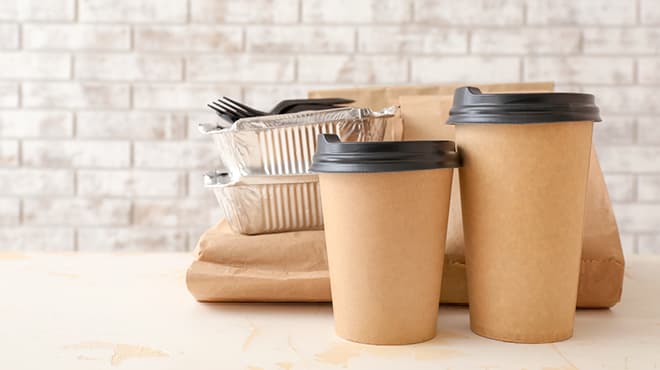Recent Posts
-

-
 Patient StoriesA lifesaver saved: An EMS veteran’s journey from rescue to recoveryNovember 14, 2025
Patient StoriesA lifesaver saved: An EMS veteran’s journey from rescue to recoveryNovember 14, 2025 -

Want to reduce chronic inflammation? Start with your grocery list

Flip through a magazine or your news feed, and you'll probably see a story about anti-inflammatory foods. But why is inflammation bad, and what does food have to do with it?
Inflammation is part of the body's response to infection or injury. Damaged tissue releases chemicals that tell white blood cells to start repairing the damage. Inflammation can start at a low level, spread throughout the body and become chronic.
Chronic inflammation can damage the body. It plays a role in the buildup of plaque in your arteries, increasing your risk of heart disease and stroke. It's also associated with a higher risk of cancer, diabetes and other chronic conditions.
How food can hurt or help your body
The choices you make at the grocery store can affect the inflammation in your body. Scientists are still unraveling how food affects inflammatory processes, but they know a few things:
- Processed and ultra-processed foods, like deli meats, energy drinks and sweetened cereals, can release inflammatory messengers that raise the risk of chronic inflammation.
- Anti-inflammatory foods tend to be the same as those that keep you healthy in other ways.
- Foods, like fruits and veggies, help the body fight against oxidative stress, which can trigger inflammation.
Add more of these foods to your grocery list
Choosing foods to reduce chronic inflammation is about variety. Specific components in food work together to reduce inflammation. That's why no specific food makes your diet anti-inflammatory. It's the sum of what you eat every day.
Overall, eat a rainbow of fruits, veggies, whole grains and legumes ― all of which have the anti-inflammatory nutrients your body needs. Fresh, simple ingredients are best since overprocessing may significantly change the nutritional content of foods.
You can start building an anti-inflammatory grocery list with:
- Beverages such as water, herbal and green teas, and coffee.
- Citrus fruits such as oranges, grapefruit and pomelos.
- Cruciferous vegetables including broccoli, cauliflower, cabbage, kohlrabi, turnips and radishes.
- Deep blue or purple foods such as blueberries, blackberries, plums and Concord grapes.
- Deep orange, yellow, red and dark green foods such as pumpkin, sweet bell peppers, tomatoes, carrots, kale, spinach, Swiss chard, arugula and endive.
- Nuts, including walnuts and almonds, and seeds like chia, flax and hemp.
- Onions.
- Plant-based proteins, including dried beans, lentils, lentil pasta and soy.
- Spices and herbs, including ginger, garlic, turmeric, cardamom, black pepper, cinnamon and rosemary.
- Whole grains, such as wheat, oats, rye, buckwheat, millet, quinoa and brown rice.
Trim these foods from your list
Gradually reduce inflammation-promoting foods from your daily meals while trying some alternatives.
Start by trimming these foods from your grocery list:Fried foods such as french fries, chips and donuts. Bake your French fries with the skin, try kale chips or use an air fryer.
- Processed meats like hot dogs, sausage, bacon and red meat. Try meatless meats or use meat as a side rather than a main dish.
- Refined carbohydrates such as white bread, rice, pasta and pastries. For a start, mix white and brown rice, white and whole-wheat pasta, or sweet with unsweetened cereal.
- Shortening, lard and margarine, and foods made with these fats. Use all types of fats in small amounts, and choose healthier oils such as olive, canola or avocado.
- Sugar-sweetened sodas, fruit drinks, sweetened teas and flavored coffees. Replace with sparkling mineral water, infused water, unsweetened tea and coffee.
Building meals with your new grocery list
These ideas can help you start building meals with anti-inflammatory foods:
- Breakfast
Start the day with oatmeal topped with berries, an apple or a fruit smoothie. - Lunch
Toss together a salad of dark greens, beans, and colorful fruit and vegetables then sprinkle with nuts or seeds. - Dinner
Fill half your plate with colorful vegetables, one of the remaining quarters with whole grains and the other quarter with a lean protein.
Another way to combine anti-inflammatory benefits is with the Mediterranean diet, which is typically high in fruits, vegetables, whole grains, olive oil and plant-based proteins and low in red meat.
Food isn't the only way to reduce inflammation in the body. Boost the results of what you eat by maintaining a healthy body weight, since weight loss is anti-inflammatory. Also, get 30 minutes of physical exercise each day and manage stress.
Susan Block is a dietitian in Diabetes Education in Bloomer and Chippewa Falls, Wisconsin.


